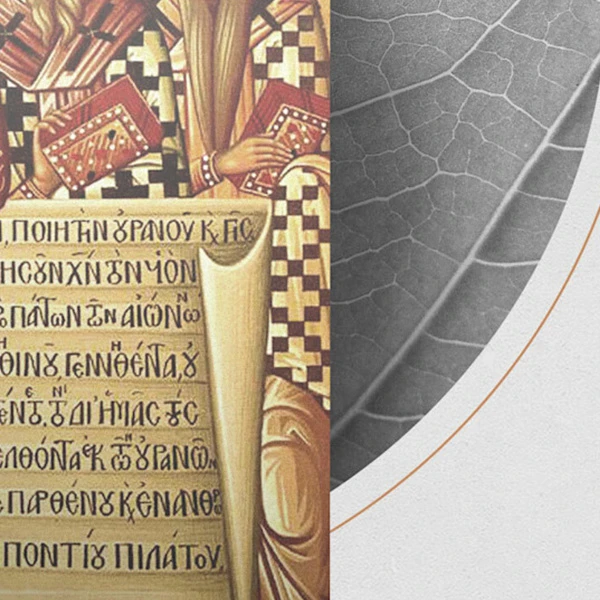What Does “Catholic” Mean?

From its earliest days, the church of Jesus Christ has been described as “catholic.” The first usage of the term appears in writings known as the Apostolic Fathers in the early to mid-second century.1 The word is from the Greek katholikos, meaning “throughout the whole,” or “universal.” This was its general ecclesiastical usage in the early centuries. However, the word catholic is now identified almost exclusively with the Roman Church. But this association is a relatively late historical development. The early church applied the term to the church as a whole, to both east and west.
Many today are in search of the one true church, the church catholic with historic continuity traced back to Jesus and the apostles. Jesus declared in Matthew 16:18, “I will build My church” (NASB). Jesus only has one church, so the question of catholicity is related directly to the true nature of the church. Rome and Eastern Orthodoxy define the church institutionally; catholicity is understood as communion with a visible institution. Protestants, on the other hand, explain the church, primarily, though not exclusively, in doctrinal or spiritual terms. Protestants assert that catholicity refers primarily to that which is spiritual. This, of course, raises the whole question of the visible versus the invisible church. The Reformers included the distinction as a vital element of their ecclesiology. Was this mere apologetics or was it a legitimately biblical argument? Was their position ever promulgated prior to the Reformation?
In Matthew 16:16, Peter confessed that Jesus is “the Christ, the Son of the living God” (NASB). Jesus responded with, “I say to you that you are Peter, and upon this rock I will build My church” (Matt. 16:18, NASB). Historically, this passage has generated tremendous controversy. Is the “rock” Peter’s confession and therefore Christ Himself, as Protestants insist? Or is the church built on Peter, and subsequently, Peter’s successors, the bishops of Rome, as the Roman Church claims? How are we to understand what Jesus actually meant?
The book of Ephesians provides a helpful commentary on this passage. In Ephesians 2:20, Paul states that the church is “built upon the foundation of the apostles and prophets, Christ Jesus Himself being the cornerstone” (NASB). The Greek word for “built upon” is the same word used by Jesus in Matthew 16:18. How is the church built upon the apostles and prophets? It was built initially through their preaching (Acts 2:42; 5:42) and then historically through their inspired writings. Through the gospel, they testified to Jesus Christ—His Person and work—as the ultimate foundation of the church (1 Cor. 3:11). In Ephesians 1:13, Paul writes that
in Him you also, after listening to the message of truth, the gospel of your salvation—having also believed, you were sealed in Him with the Holy Spirit of promise. (NASB)
Paul is explaining how the Ephesian church was built, and in so doing, describes how the church catholic will be built. The gospel was proclaimed, the Ephesians responded in faith and were sealed in a spiritual union with Jesus Christ. Therefore, the means of building the church is the Apostolic gospel, a message of salvation by grace alone through faith alone in Christ alone—a message prophesied by the prophets and witnessed by the eye-witness accounts of the Apostles. Thus, the rock of Matthew 16 must refer to Peter’s confession of Christ.
The primacy and importance of the gospel in understanding the nature and catholicity of the true church cannot be overstated. Paul warned the Galatians that those who embraced and taught a distorted gospel had deserted Christ and were under a divine curse (Gal. 1:6–8). They were not part of the true catholic church. Therefore, we can conclude from the clear teaching of Scripture that the church consists of those who have embraced the true gospel, have been spiritually united with Christ, and have become members of His Body—His church (John 15:4–5; 17:23; Rom. 12:12–13; Eph. 1:22–23). And being spiritual in nature, it follows that this union is invisible. Paul explained the distinction between the visible and invisible church using Israel as an example. Not all who were part of the visible nation of Israel were part of the spiritual kingdom of God (Rom. 2:28–29; 9:6–7). Scripture makes it clear that it is quite possible to be a member of the visible church and not part of the invisible church of Jesus Christ. First and foremost, the nature of the one, true church is spiritual and invisible.
To be a true member of the Church catholic is to be made part of that august body of saints, the elect of God who have been converted and spiritually united to Jesus Christ.
However, though this spiritual union may not be visible, the union itself will produce visible manifestations in the lives of all who are united to Christ. Members of the church catholic will be evidenced by new natures and transformed lives characterized by submission, obedience, love, and commitment to God and His Word, particularly His gospel (John 3:3–8; 8:31–32; Rom. 6:1–22; 2 Cor. 5:17; Gal. 1:6–9; Phil. 3:3–11; Titus 2:11–14; 1 John 2:3–6). The Apostle John warned that where there is no holiness of life, there is no union with Christ, even if the professing believer is a card carrying member of the visible church (1 John 2:3–6; 3:4–10). Jesus gave similar warnings in His preaching and parables (Matt. 7:13–23, 13:18–30; John 8:30–44). Additionally, those individuals who are united with Christ are also members of visible communions organized as local bodies, which is why Paul could speak of the church at Rome, Corinth, and Ephesus.
Jesus commanded that His gospel be proclaimed throughout the world (Matt. 28:18–20). His one, true church catholic embraces all men from every culture, race, gender, and socio-political background (Eph. 2:11–12; Col. 3:11; Heb. 12:22–23). It is the company of those who have believed and obeyed the gospel, giving evidence of their union with Christ by holiness of life. These will form the perfected church catholic in heaven where, for all eternity, they will worship, serve, and glorify God and the Lamb (Rev. 5:8–14, 22:1–4). True catholicity is spiritual in essence, not institutional.
The doctrine of the invisible church was not a novel teaching of the Reformers. One of the strongest proponents for it in the early church was Augustine. He taught that the church was built, not on Peter, but on his confession, and therefore, on Christ: “Christ, you see, built his church not on a man but on Peter’s confession.”2
This exegesis is representative of the position of the early church fathers. Augustine taught that there were many in the visible church who had professed Christ, had been baptized and had partaken of the sacraments but were not members of the invisible church.3 According to Augustine, the true church consists of those who have repented and believed, who are spiritually united to Christ as their Head, and who live holy lives as evidence of their mystical union with Him. Those who do not manifest a transformed life, he characterized as Christians in name only, not genuine. He appealed to New Testament teaching on the tares, the dragnet, the goats, and the wheat and tares for support.4 In his treatise On Faith and Works, Augustine warned against a dead faith that professes Christ but does not produce a changed life because it lacks genuine repentance. This renders the sacraments null and void. Augustine certainly viewed the church as visible but he made an explicit distinction between the church visible and the church invisible.
To be a true member of the church catholic is to be made part of that august body of saints, the elect of God who have been converted and spiritually united to Jesus Christ. It is to join the great company of the ransomed, healed, restored, and forgiven. In light of the sober possibility of profession without possession, the New Testament exhorts us to examine ourselves, to see if we are in the faith, to make our calling and election sure (2 Cor. 13:5). We have a moral obligation to encourage others to do likewise. It is union with Christ, not membership in a visible organization that makes a place for us in the one, true catholic church. Thus the saints of all ages and Scripture proclaim: “Worthy art Thou . . . for Thou wast slain, and didst purchase for God with Thy blood men from every tribe and tongue and people and nation” (Rev. 5:9, NASB).
-
Ignatius of Antioch, Smyrneans 8.9; The Martyrdom of Polycarp, Introduction. ↩
-
Augustine, Sermon 229 P.1., in The Works of Saint Augustine, Sermons, vol. III.vi. ↩
-
Augustine, Sermons on the Gospel of John, Tractate 27:11; On Baptism, book IV, chapter 3.5. ↩
-
(Sermons 5.3; 23.4; 88.19; 149.4; 137.9; Answer to Petilian, book 3, chapter 2.3; On Psalms 965.15; On Morals of the Catholic Church 34.76; City of God, book I, chapter 35, On the Unity of the Church 34, 35. ↩



